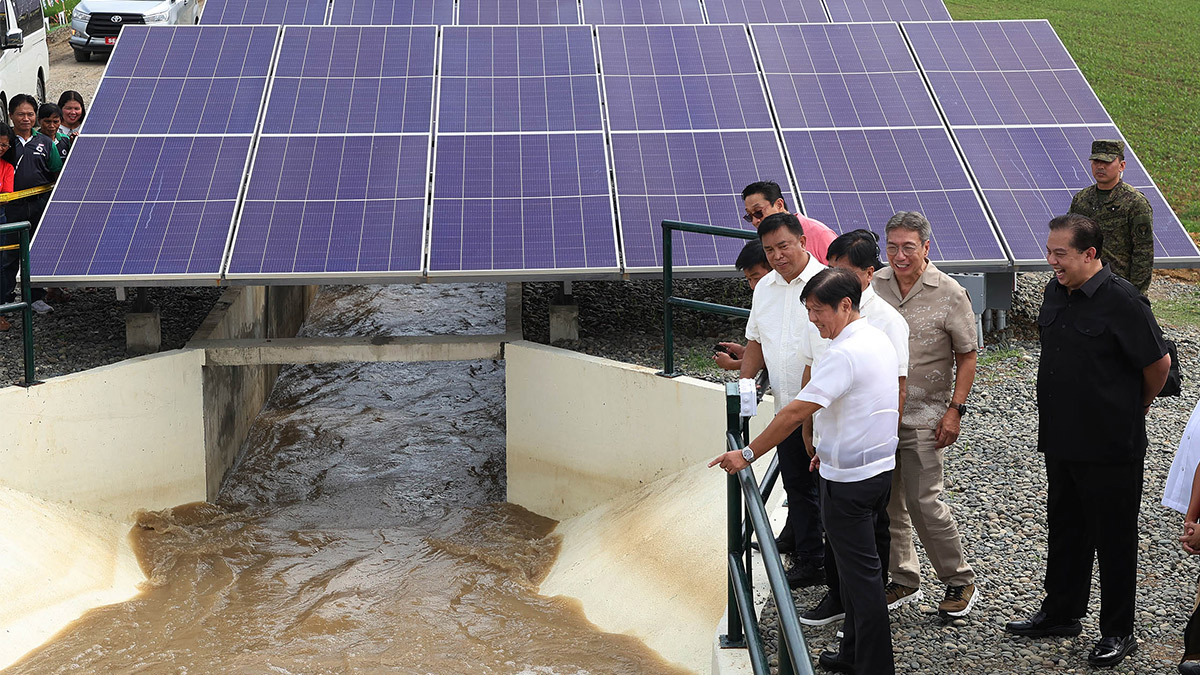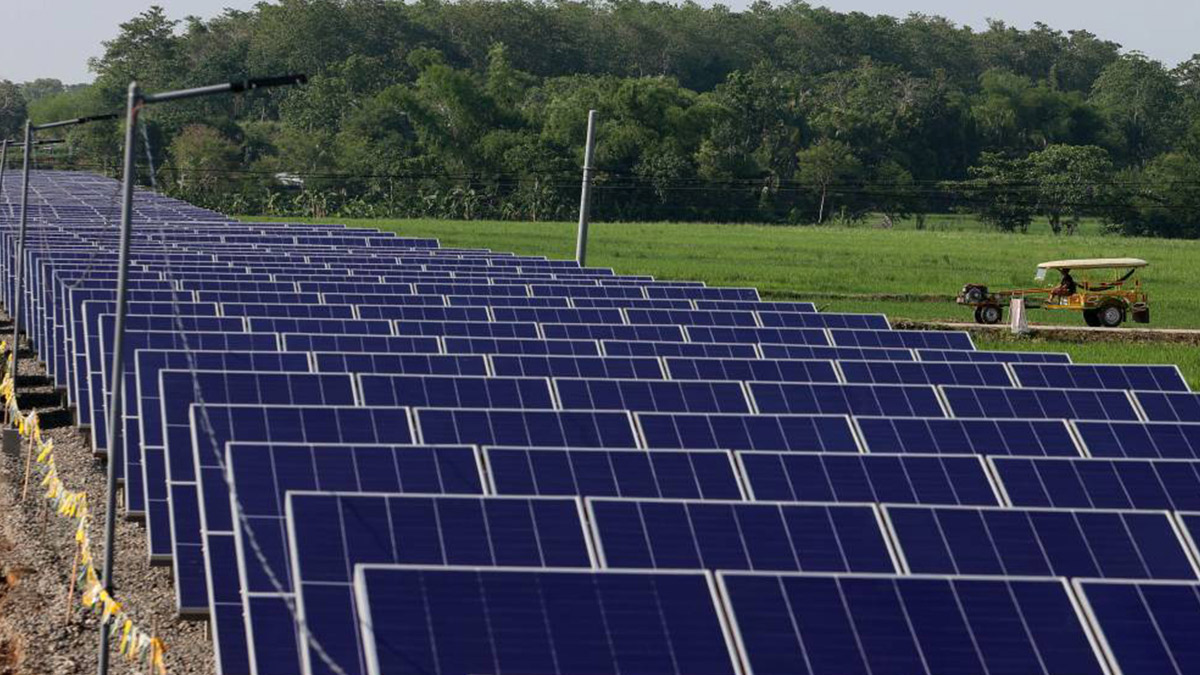Farm losses from El Niño climb to P9.89B

SOLAR POWER FOR FARMS President Marcos, accompanied by top officials of the National Irrigation Administration and other agencies, leads the inauguration of the Solar-Powered Pump Irrigation Project in Quirino, Isabela, on Monday. The project aims to end farmers’ dependence on gasoline or diesel engine water pumps and cut production costs. —photos by Marianne Bermudez
MANILA, Philippines — The agriculture sector continued to reel from the extreme heat and lack of rain caused by the El Niño weather phenomenon, with losses rising to P9.89 billion as of June 6 from the P9.5 billion in damage reported on May 16, the Department of Agriculture (DA) said on Monday.
The DA said the dry spell, which was officially declared over last Friday, affected the livelihood of 183,455 farmers and fisherfolk in 13 regions—Cordillera, Ilocos, Cagayan Valley, Central Luzon, Calabarzon (Cavite, Laguna, Batangas, Rizal, Quezon), Mimaropa (Mindoro, Marinduque, Romblon, Palawan), Bicol, Western Visayas, Eastern Visayas, Zamboanga Peninsula, Central Mindanao, Davao and Soccsksargen (South Cotabato, Cotabato, Sultan Kudarat, Sarangani, General Santos) in central Mindanao.
READ: DA: Agriculture damage due to El Niño hits P6.3 billion
Rice accounted for P4.75 billion, or 48.03 percent, of the agricultural losses, followed by corn, with P3.37 billion, or 34.04 percent, of the total damage.
The DA said it provided P9.91 billion worth of interventions to affected farmers and fishers.
Article continues after this advertisementThese included P8.59 billion worth of cash aid through the DA’s Rice Farmers Financial Assistance and production support amounting to P659.17 million.
Article continues after this advertisementThe Philippine Crop Insurance Corp. also indemnified 20,372 farmers in affected regions, amounting to P177.12 million.
Despite the rising losses, the DA said the effects of the latest El Niño were not as severe as those in the late 1990s to early 2010s.
Based on DA records, the agriculture sector suffered P17.44 billion worth of damage from the 2009 El Niño.
The worst in terms of the area was the drought in 1997, which affected 677,441 hectares, although losses that year amounted to only P3.07 billion.
Sun-powered irrigation
Meanwhile, President Ferdinand Marcos Jr. inaugurated on Monday the Cabaruan Solar-Powered Pump Irrigation Project (SPIP) in Quirino town in Isabela, which is expected to supply water to 350 ha of ricefields and benefit 237 palay farmers.
The President recalled that 33 towns in Isabela declared a state of calamity due to drought caused by El Niño, affecting close to 48,000 families in the entire Cagayan Valley region.
The Cabaruan SPIP was built by the National Irrigation Administration (NIA) under its Magat River Integrated Irrigation System at a total project cost of P65.8 million.

GREEN PANELS More than 230 farmers will benefit from the government’s Solar-Powered Pump Irrigation Project in Quirino, Isabela, that President Marcos opened on Monday. The project provides irrigation water service to 350 hectares of agricultural land.
It is the first SPIP in the country to be constructed over an irrigation canal and the biggest SPIP nationwide, with a total of 1,056 solar panels that can generate 739,200 watts of power. Each of its two submersible pumps can discharge 12,800 gallons of water a minute, according to the NIA.
“If in the past we used machinery that ran on gasoline to let irrigation flow into our farms, we would now make this task easier by using electricity from the sun—this would mean free electricity which, in turn, would result in free irrigation,” the President said.
According to Marcos, 152 solar-powered pump irrigation projects are being built across the country, with 118 projects to be put up by the government.
As of last year, 82 projects had been completed. —with a report from Melvin Gascon